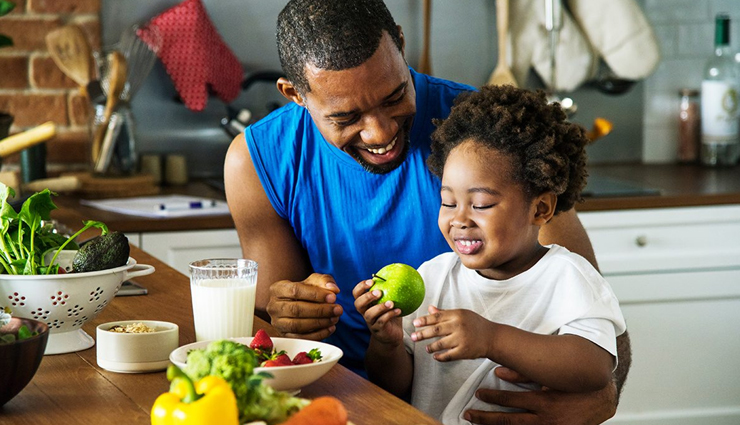- Home›
- Mates & Me›
- Tips To Teach Your Kids How To Respect Food
Tips To Teach Your Kids How To Respect Food
By: Priyanka Sat, 19 Dec 2020 3:05:58

Children have their own list of food and drinks and details of their likes and dislikes. This stubbornness of childhood later becomes his habit and then he always stays away from what he dislikes. They show ten tantrums to eat anything. At the same time, the food also starts giving up. For this, by adopting some methods and taking care of small things, you can change their habits. Through the article, you may know the tips by which children will understand the importance of food.

# Teach kids about food
Teaching children about where their food comes from is the single best route to raising food savvy kids. Take them to your local butchers and greengrocer (or even a nearby farm), so they can see the effort that goes into producing food. Start a kitchen garden and get them growing simple things such as Alfalfa sprouts. The act of watching a seed turn into something edible is a powerful lesson in how precious food is. Get them involved in cooking when you can. It can be a fun activity and helps them get them invested in the meal. You might even find they start nagging you to finish everything on your plate.
# Take a family food waste challenge.
Take our 6-week food waste challenge as a family. Kids will have fun measuring how much food gets wasted and coming up with ideas for how to waste less. You can even set a family goal, like reducing overall waste by 25%. If your family succeeds, you all get a reward, like a trip to an amusement park or a dinner at a favorite restaurant.

# Combat fussy eating
If your child seems to dislike something new every week try some tricks to combat fussy eating. Giving everyone in the household three ingredients to dislike helps you avoid serving things that will be discarded and encourages children to be selective about what they avoid. When all else fails, distraction is key. Have fun with how you plate meals to get children to eat everything up. Try making a forest scene with broccoli, or a smiley face with cherry tomatoes and runner beans.
# Limit pre-meal snacking.
Don’t let your children snack mindlessly when you’re approaching dinnertime. Not only are they less likely to make healthy snack choices during this time of day, they may also fill up their little tummies too much to eat a normal portion during dinner, increasing the chances of wasted food and less nourished kids.

# Start with smaller portions
We tend to load kids plates up, only for the majority of their meal to get tossed away. Start by giving them small portions, since you can always serve them more when they’re finished. It also means you can easily store their leftovers, meaning less time spent making child-friendly meals.
# Make food easy to eat.
How many times have you had to toss a half-eaten banana or an apple with two bites taken out of it? Instead of offering whole fruits and vegetables, cut them into bite-size pieces.

# Get the portions right.
If they are too young to serve themselves, serve young children small portions of food at meal and snack time. They have little tummies and if you heap too much onto their plates, some of it is likely to go to waste.
# Save what they don’t eat.
If your child declares they are full before finishing a reasonable amount of their meal, save the leftovers. Instead of having them snack on something less than wholesome an hour or two later, they can finish their meal, reducing waste and increasing the likelihood of a well-rounded diet.





